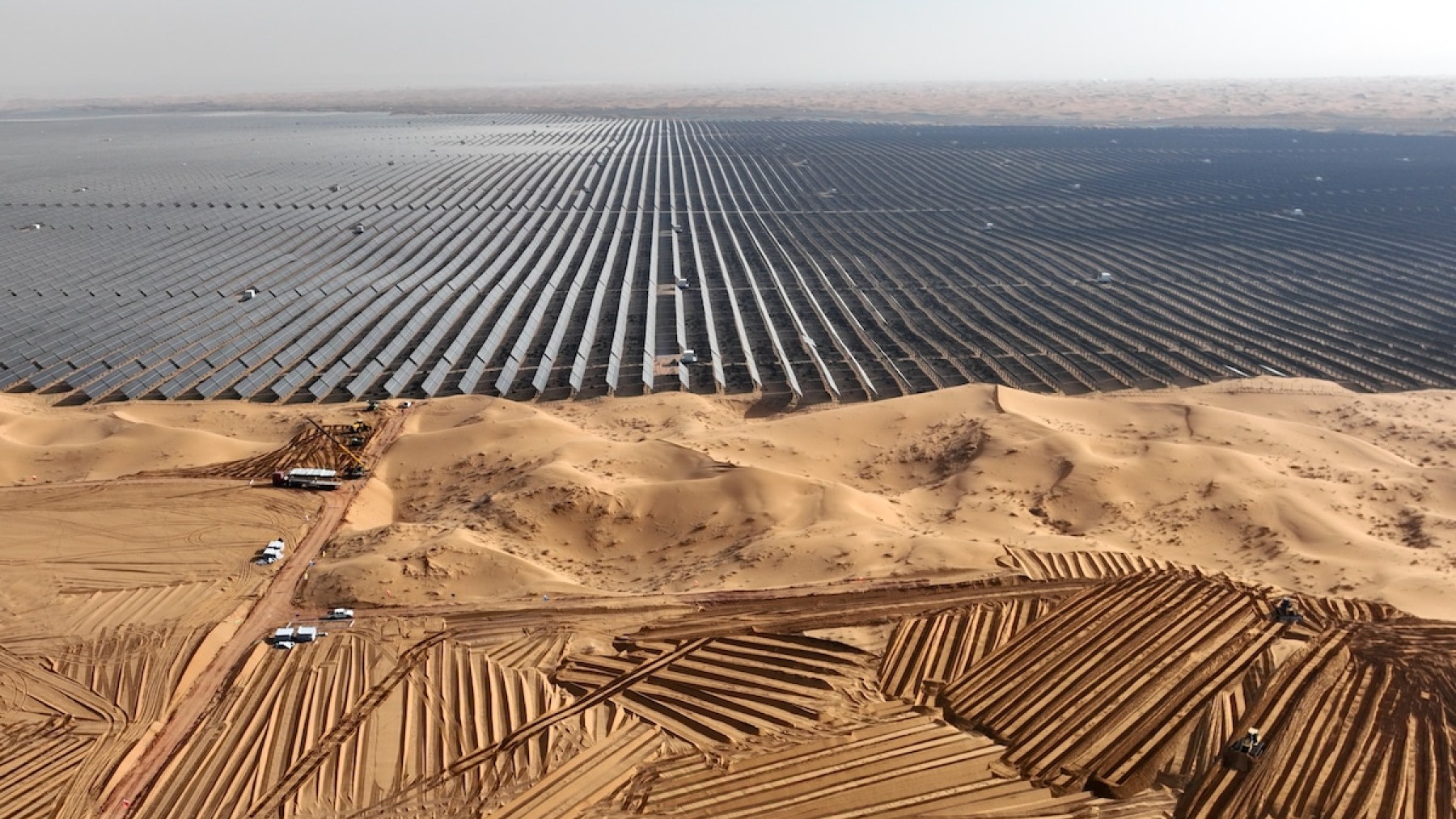America won the Space Race, but has lost the decisive one: China has swept us off our feet with this energy
October 6, 2024

The renewable energy sector, previously publicized as a foundation of a green future, now stands trapped in an aggressive geopolitical competition-mainly the trade war of US-China. While both of these nations enforce tariffs on a variety of supplies, the solar energy division, a strategic participant in this war, is redesigning the international advance to clean energy amidst rising tensions. The implications for climate goals and economic leadership are profound, raising critical questions regarding renewable energy’s future.
Renewable energy battle: China’s supreme solar growth
The rapid rise of China in the renewable energy division is astonishing. In 2023, China inserted more large-scale solar capability than any other country in the world joined, accomplishing a complete installed capability of 1,120 GW by 2024. The government supported grants, huge investments in large scale initiatives, as well as an intentional objective to control international supply sequences for renewable technologies.
Reports imply that now China commands more than 80% of the globe’s solar panel generation, an achievement not only of financial competence but also the outcome of intended state strategies, comprising of aggressive overgeneration as well as calm conservational guidelines.
This supremacy sets a major task for the US which seeks to command the renewable energy transformation whilst concurrently defending its promising domestic segment. The Biden administration finds themselves in a fragile balance, advocating inexpensive clean energy via entrance of low-cost Chinese solar panels while preserving US jobs as well as industry.
The bets are high, as the failure of US solar companies below the weight of Chinese rivalry might mean losing any possibility of fostering a strong, domestic solar division.
Safeguarding US employment or stifling rivalry? The American solar tax predicament
In reply to Chinese solar panels increasing supremacy, the government of the US has employed taxes along with trade rates. A significant act happened in 2022 when Biden administration introduced a two year tariff suspension on solar importations from Southeast Asia, an action critics contend has progressed the hold that China has over the solar market in the US.
Whilst the objective was to safeguard American jobs together with encouraging local manufacturing, the accidental penalties of these rates have presented questions regarding the prolonged practicality of the solar sector in the US. As rates begin, the solar sector in the US has seen winners as well as losers.
Corporations such as First Solar along with Hanwha Solutions of South Korea have flourished, reinforced by shielding tariffs. But the wider decision landscape continues to stay unstable. Key US industrialists have become bankrupt, incapable to compete with the reduced costs presented by Chinese corporations. This contrast proposes the question, “Can the US offer to value protection above contestability with no risks to its prolonged energy aims?”
Reconsidering solar supply chains: Is sustainability being sacrificed?
Amongst the rivalry, a peculiar contradiction appears, whilst solar energy is dire in the battle against climate change, numerous panels generated in China are made in coal-powered plants. The fossil fuel dependence weakens the ecological advantages coupled with solar power as well as obscures the plot regarding ecological technologies.
The hauling of the panels, frequently shipped on diesel-fueled ships, contributes to further carbon emissions, confronting the sustainability of the existing international solar supply chain. While the country struggles with their energy procedures, the ecological consequences of depending greatly on Chinese manufacturing grow progressively evident.
Questions surface regarding the prolonged sustainability of importation of solar panels generated beneath high-carbon circumstances. The task rests in locating other options guaranteeing the reliability of the clean energy shift whilst additionally concentrating on local industry worries.
The trade war between the US as well as China offers a complicated landscape for the division of renewable energy, where rivalry, tariffs, as well as ecological concerns unite. While both the countries strive for guidance in the ecological energy transformation, the necessity for a combined method becomes dominant.
Equalizing the quest of reasonable solar power together with the safety of local industries is vital for the prolonged feasibility of the division. Eventually, obtaining mutual terrain within the geopolitical competition will be critical for guaranteeing an environmental as well as a reasonable energy shift in a fast altering world.
Search
RECENT PRESS RELEASES
Related Post




